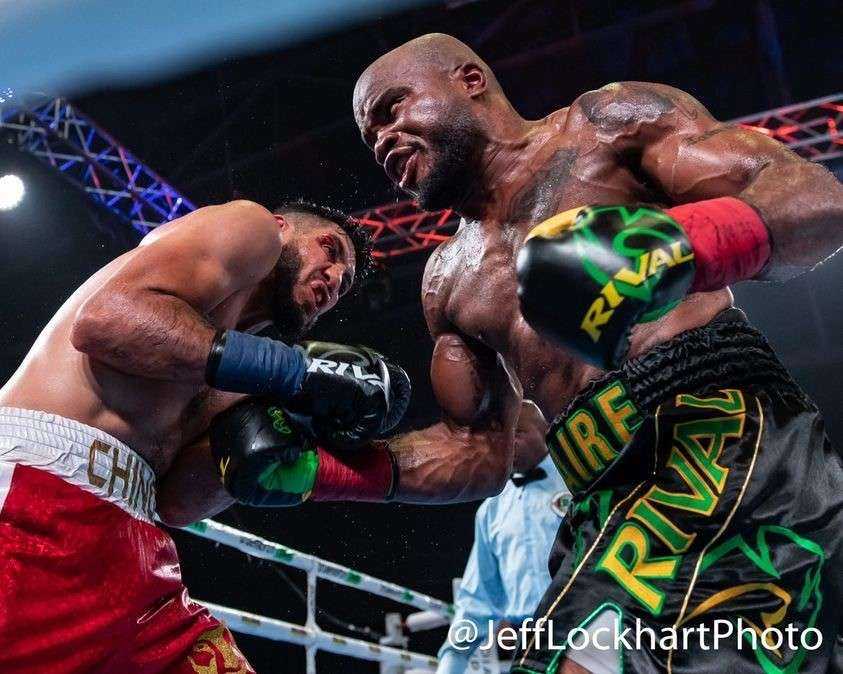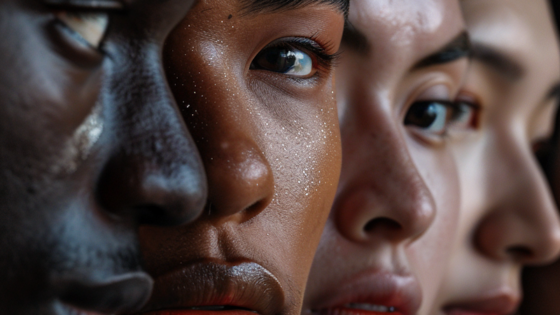on
BY SIMONE J. SMITH
You take a look at the clock; one minute left. You quickly readjust your focus and try to ignore the throbbing pain that has started from the head butt that you just got. It has been eight rounds, and even though you have trained for this for the past six months, you are tired. Your head and hands feel heavy, but if you focus on that, you will miss the giant gloves that are heading directly at your temple.
Whew! Your opponent just missed, and you feel the breeze from the gloves across your face. There is no time to doubt yourself, you have four rounds to go, and for you, it is a fight until that last bell rings…
Regardless of the skill and physical condition of a boxer, the time does come when they face defeat in a ring. They do get hurt or injured; yet they are forced to continue fighting. Boxing is not like other sports where you can look to the referee to call timeout. Instead, a boxer must fight until the bell rings. They have the option to quit, but most fighters never will. Rather, they will fight regardless of the circumstances they face inside the ring.
Boxing is perhaps the most physically challenging sport of all. It requires both upper and lower body strength, as well as unprecedented levels of cardiovascular endurance. A boxer has to stand up to the punishment inflicted by an equally, well-conditioned opponent, and to further complicate things, the boxer’s mind has to be as tough as their body. Mental fortitude is the true key to success inside the ring, as unlike other sports, a fighter is alone in the ring. He does not have a teammate to share the responsibilities with. This is what makes boxing, and boxers unique in the world of sports.
Shakeel Phin (aka, The Jamaican Juggernaut) was born in Montreal Quebec, and lived there most of his life. He moved around a bit but had most of his childhood experiences living in Montreal.
“I was the oldest of three, and two other siblings came when I was older. Even though things seemed easy, I realized that things must have been tough for my mom. She made our life good with what she had.
My mom put me in football when I was 13 years old, and I dabbled in rugby, volleyball, but my main love was football. I played for a college team, and I knew I wanted to make it to the pros. One day I walked into a boxing gym, because I wanted to cross train, but there was something about boxing; I fell in love. After being in the gym for two weeks, one of the boxing coaches told me I should do some sparring.
He made me fight someone who was 145 pounds, but I didn’t know he was the best fighter in the gym. That day I learned a very important lesson; weight doesn’t matter. They were like, let’s do three rounds, I hit him with a jab, and he smirked at me, and I saw the coach tell him to turn it up. This dude started throwing punches. I started to shell up, my leg was up, my nose was bloody. The other boxers were like ‘Good job, good job.’ I was like really. I knew I had to commit at that point, because I wanted to get better.”
Shakeel had decided in his heart that he wanted to succeed inside the ring. He began to make boxing his sole purpose in life. He began to: eat, sleep and dream boxing, because deep down he knew it was the only way to be the best. Boxing is not a sport you play. This is a sport where you can get hurt.
He had his first amateur fight at six months (2011) and then he went on a streak. He won 15 of his amateur fights. After his first five fights he fought in the Bronze Gloves Provincial fights and won. It was around this time that he started training with another trainer that his dad introduced him to.
Years ago, Shakeel’s father had also boxed and even put together a respectable string of amateur wins, but now that his own flesh and blood had decided to follow the same path, he sought out a knowledgeable trainer, someone to guide and protect his son. He turned to Ian MacKillop, a seasoned pro with forty bouts to his credit, who had competed for Canadian and intercontinental titles, trained with Vernon Forrest and Freddie Roach, and battled: Kermit Cintron, Shannon Taylor and Danie Geale. Ian had retired and begun work as a coach, and he was impressed with what he saw from Shakeel.
The coach that Shakeel had originally started training with gave him an ultimatum, him or the coach my dad had suggested. He didn’t like that, so he decided to work solely with Ian MacKillop.
His debut was in Gatineau, Quebec, where he stopped Eddie Gates in the fourth round.
“January 2015 was my first professional fight. It was an extremely nerve-racking experience. I spoke with the pros, and they gave me their thoughts about how things were different from fighting as an amateur fighter. I spoke with Otis and Howard Grant about fighting pro, and they were in my corner helping out for my first fight.
When I was getting wrapped, I saw how different the gloves were. They were hard as a rock, not spongy like the amateur gloves. I ended up knocking Eddie out in the fourth round, but I also got my first cut when he head butted me. From there things started to really take off.”
The win earned him an invitation to compete on the undercard of the big Premier Boxing Champions event happening in Quebec City just two months later. Shakeel and Ian, both saw it as a great opportunity, a chance to perform in front of a big crowd.
“My second fight felt different, something was off. I ended up losing in a close decision to Roody Rene. It went from people calling me all the time, to no calls at all. It opened my eyes to what really happens in the world of boxing. Psychologically it was hard, I was going to give up, but my fiancé at the time said ‘No, you are built for this!’
I had to ask myself the question, do I want to do this? I knew a lot of champions who had losses early in their careers: Bernard Hopkins, Juan Manuel Marquez, even Henry Armstrong. Ian told me I had what it took to succeed so I listened and got back in the gym and just worked harder. That loss was a blessing in disguise. It forced me to be more focused.”
Shakeel had his third fight in Baltimore, Maryland, and went on a 10-fight win streak. In February 2016, he won the Canadian Championship. In his 16th fight he had a close loss, and then won two North American titles in 2019.
At the end of it all, Shakeel’s family is what keeps him motivated; keeps him immersed in his pursuit of being the best
“I had my son in January, and he motivates me 110%. I would do anything for him.”
Boxing is a sport for warriors, those who are strong both mentally and physically. They will all face fear and doubt, but with dedicated training and experience our Classic Man has shown us that anything is possible
Stay in the loop with exclusive news, stories, and insights—delivered straight to your inbox. No fluff, just real content that matters. Sign up today!
Chef Devan Rajkumar
We, as humans are guaranteed certain things in life: stressors, taxes, bills and death are the first thoughts that pop to mind. It is not uncommon that many people find a hard time dealing with these daily life stressors, and at times will find themselves losing control over their lives. Simone Jennifer Smith’s great passion is using the gifts that have been given to her, to help educate her clients on how to live meaningful lives. The Hear to Help Team consists of powerfully motivated individuals, who like Simone, see that there is a need in this world; a need for real connection. As the founder and Director of Hear 2 Help, Simone leads a team that goes out into the community day to day, servicing families with their educational, legal and mental health needs.Her dedication shows in her Toronto Caribbean newspaper articles, and in her role as a host on the TCN TV Network.













